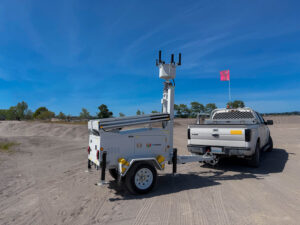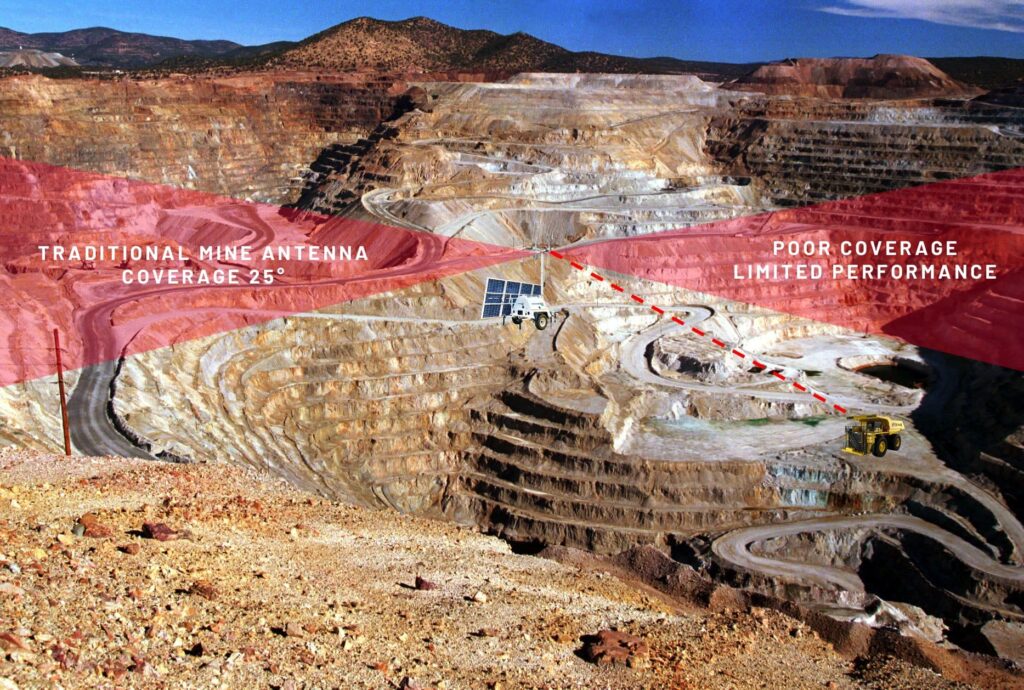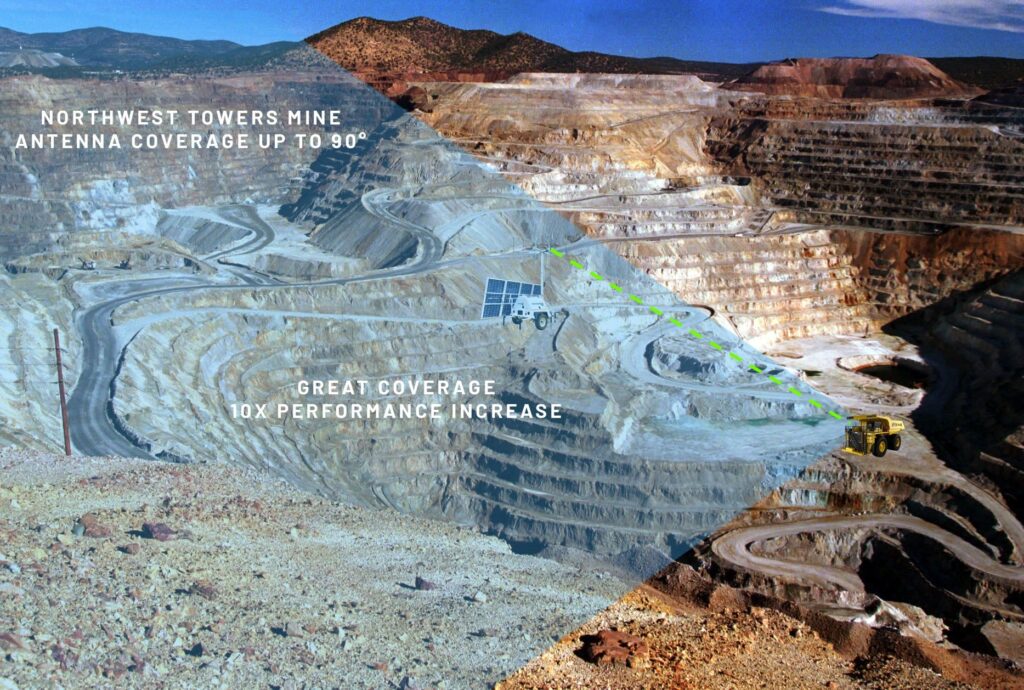




When designing a wireless network, choosing an antenna that best fits the topology of your environment can have a massive impact on performance.
In recent testing of our new rugged wide vertical beamwidth, Omni-directional mining antennas we saw a 10X increase in speeds when compared to a higher gain antenna. The increase can be attributed to two important factors.
First, the topology of the test was simulating the topology of an open-pit mine network. The high wall was a 45 degree slope and the test point was 210M from the base station.
Typical antennas utilized in mining networks have a gain of 3-6db and a vertical
beamwidth of 15-30 degrees. As a result, coverage at the high wall face has
historically been a huge challenge.
Our new wide vertical beamwidth antennas solve this challenge with average beam widths of 50-60 degrees and peak coverage as high as 90 degrees on some parts of the dual-band WiFi spectrum.
The second factor in this speed increase is our use of discrete horizontal and vertical polarized antennas. This is crucial when using MIMO radios in an outdoor environment.
In order for a WiFi radio to “hear” both streams, it needs a method for separating the two TX chains of the radio into a way that the receiver can clearly receive both streams without the other stream interfering. Simply turning a vertical antenna on its side does not resolve this issue due to the “pancake” pattern of omnidirectional antennas. Our solution solves this by providing matched vertical and horizontal pairs.


